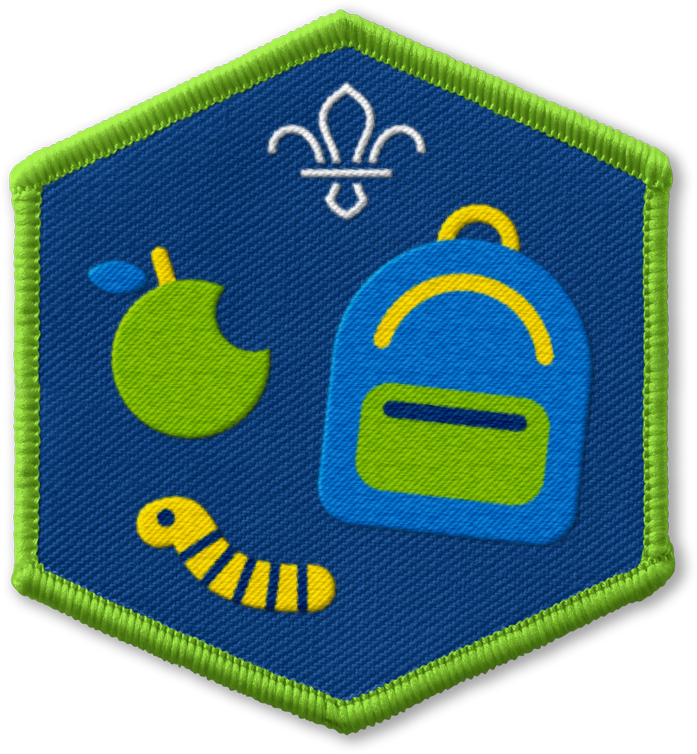
Make some tasty trail mix
You’ll need
- Trail mix ingredients (see instructions for suggestions)
- Sealable containers
- Measuring cups

Before you begin
- Use the safety checklist to help you plan and risk assess your activity. There's also more guidance to help you carry out your risk assessment, including examples.
- Make sure all young people and adults involved in the activity know how to take part safely.
- Make sure you’ll have enough adult helpers. You may need some parents and carers to help if you’re short on helpers.
Planning this activity
- Check carefully for any allergies or dietary requirements in advance of this activity and avoid these when buying items for the group to prevent cross-contamination. If you’re unsure what people can have, check with the young person and their parents or carers.
- Try to shop carefully and bulk-buy to keep the cost of ingredients down.
- Some ingredient suggestions include:
- Nuts and seeds, such as roasted peanuts, cashews, toasted almonds, raisins, sultanas, sunflower seeds, macadamia nuts, pumpkin seeds and dried cranberries.
- Dried fruit, such as dried cranberries, raisins, sultanas, dried pineapple, dried apricots and banana chips.
- Sweet treats, such as chocolate chips, chocolate or yoghurt-covered raisins and small chocolates, such as M and M’s or Smarties.
- Let your group know in advance that you’ll be doing this activity and ask them to bring in sealable containers to store their trail mix in. You could also use paper ice cream tubs or bowls.
- On a clean, flat surface, set out your trail mix ingredients in bowls. You could put two or three spoons next to each ingredient.
Run the activity
- Gather everyone together and explain that you’re going to make trail mix. You could ask people what trail mix is, what it’s made up of and why people use those
- Next, chat through each ingredient to let people know what each item is.
- Let people take turns, or be in pairs or small groups, to collect their trail mix. You could also have several sets of trail mix ingredients and hand them out to each group to choose from.
- People choose trail mix ingredients from the bowls. You may want to set limits on how many of each item people can take to make sure everyone has some of everything. An adult or young leader could supervise the quantities too.
- When everyone has got their mix together, come together to compare recipes. Ask people what makes their trail mix healthy, why they chose those ingredients and whether it tastes nice. The only way to do that is to try some!
- People can seal their trail mix in the containers to keep it fresh. They could use it the following day as a snack or at the weekend on a walk somewhere.
Reflection
Bringing trail mix along on a hike is a great idea because it’s a healthy snack and it keeps energy levels up. Nuts and seeds contain essential protein, fibre, vitamins and minerals, while fruits are rich in antioxidants. Why’s it a good idea to carry a snack that’s both healthy and gives you energy?
Safety
All activities must be safely managed. You must complete a thorough risk assessment and take appropriate steps to reduce risk. Use the safety checklist to help you plan and risk assess your activity. Always get approval for the activity, and have suitable supervision and an InTouch process.
- Cooking
Teach young people how to use cooking equipment safely. Supervise them appropriately throughout. Make sure it’s safe to use and follow manufacturers’ guidelines for use.
- Food
Remember to check for allergies, eating problems, fasting or dietary requirements and adjust the recipe as needed. Make sure you’ve suitable areas for storing and preparing food and avoid cross contamination of different foods. Take a look at our guidance on food safety and hygiene.
- Check for allergies, intolerances, eating problems, eating disorders, food sensitivities or dietary requirements, then adjust the food items used as needed. This may include making sure there’s no cross-contamination during the storage, preparation, cooking and serving. You may need to use separate chopping boards, equipment and utensils, such as tongs or toasters, for different dietary requirements, allergies and foods. If you’re unsure, check with the young person and their parents or carers.
- Some people may not like certain food textures or tastes and that’s OK. No-one has to use all the ingredients and no-one should be made to try foods if they’re not happy, comfortable or don’t want to. You can try to find an alternative for them.
- Be conscious about who may be fasting when running a food-related activity – you may want to plan it for when everyone can get involved.
- Remember that everyone’s situations will be different. Some households may be able to easily afford to buy any food they like, whereas others may rely on help from food banks or have fewer choices at the supermarket.
All Scout activities should be inclusive and accessible.
Why not make some trail mix before you head out on a walk, hike or trip?


